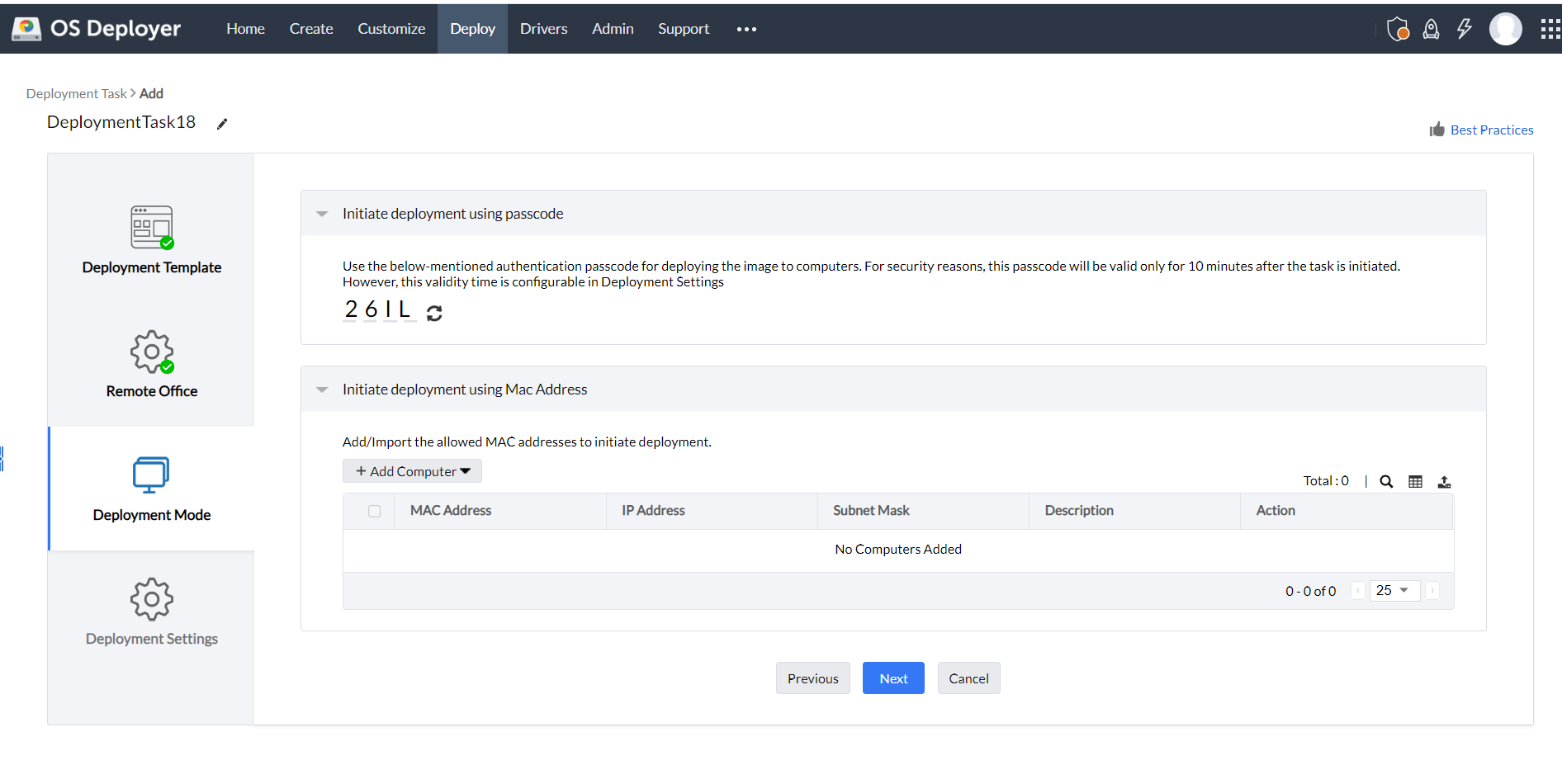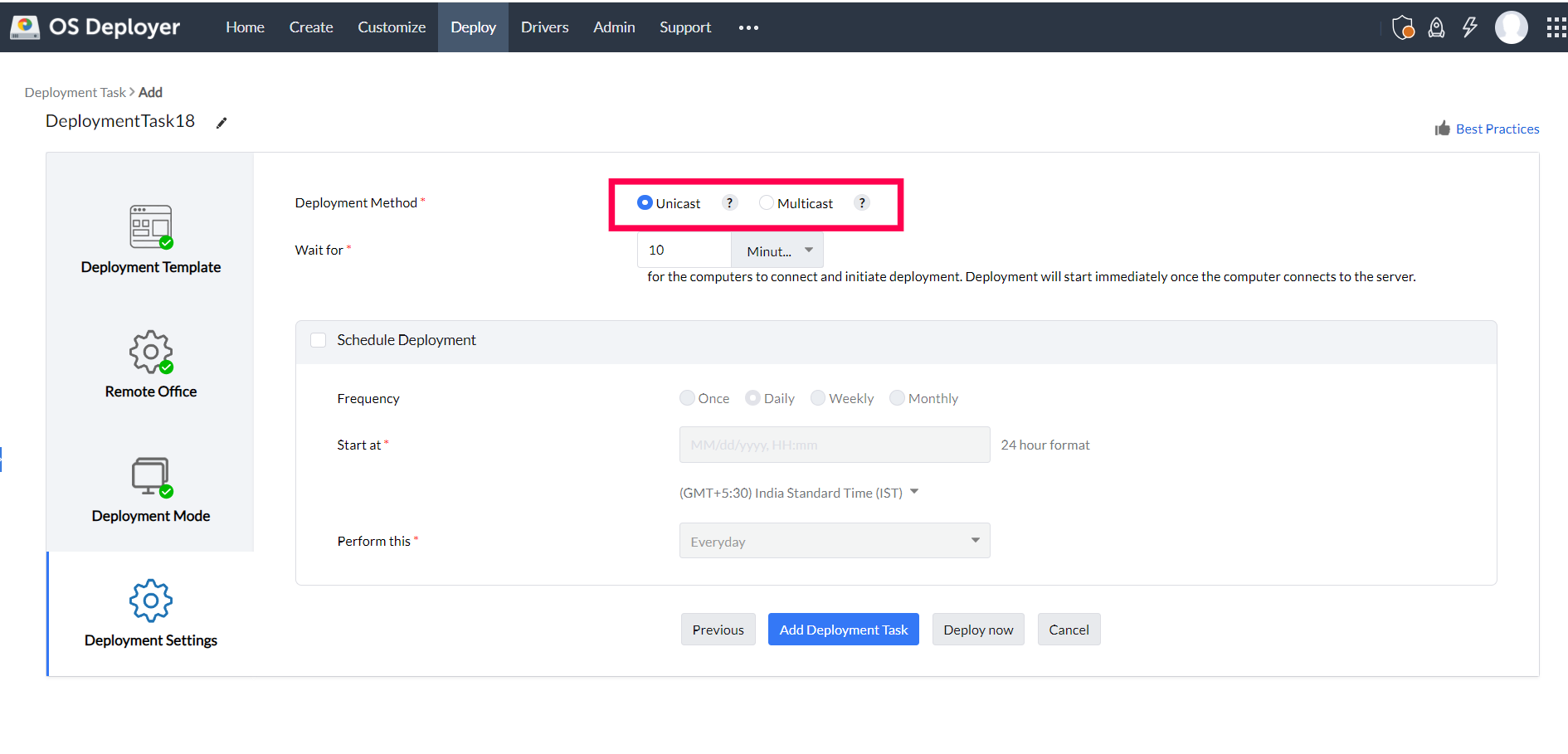OS Deployment is the process of deploying OS images that are captured to target computers. From fixing certain system-related issues—like hard disk failure, data recovery, and system slowdown—to providing a device to a new employee, OS imaging and deployment is one of an IT admin's primary tasks.
Administrators are often fatigued or bored performing the same old traditional methods for deploying the OS. To make their work easier, OS Deployer offers a new set of OS deployment tools to help admins seamlessly deploy operating systems.
OS Deployer allows you to perform deployments using two different OS deployment methods. It can be done either using MAC addresses or using a unique authentication passcode. Using the passcode, all the configured deployment settings will be bundled to a password, which upon entering on the target computer, initiates the deployment process. This method eliminates the need to remember complex MAC addresses. Administrators can also share this passcode with employees, allowing them to perform OS image deployment on their own.

Administrators can select their mode of deployment based on the number of computers they're planning to deploy. When deploying operating systems for five computers or less, administrators can opt for a unicast method, whereby the image is taken and sent to each computer one by one. To deploy operating systems on multiple computers, administrators can opt for the multicast method, where the image is taken and sent to all the computers simultaneously. While choosing multicast method, administrators can also save the bandwidth usage by configuring the appropriate settings.

Admins can schedule deployment whenever it's convenient for the organizations.
Operating system deployment can be done on any of the following environments using OS Deployer: